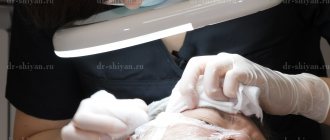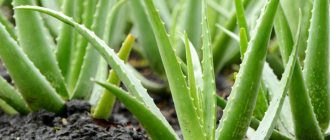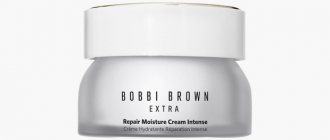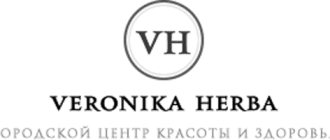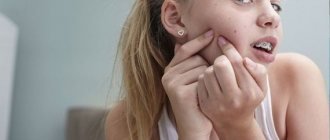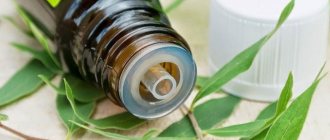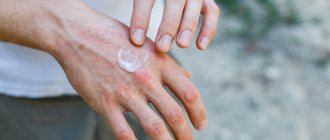With allergy season approaching, many parents are thinking about keeping antihistamines for children on hand at all times. However, choosing a medicine may not be so simple - much depends on the age of the child and specific situations in which help may be needed. Often parents come to the pharmacy and start asking the mayor what is the best thing to do. In order to help our readers in this situation, allergist-immunologist Yegor Batorov answers the most pressing questions from parents about this group of drugs.
What are the best, safest and most effective antiallergenic drugs for children under one year of age?
The choice of antiallergic drugs for children under one year old, unfortunately or fortunately, is small. After the first month of life, you can give dimetindene drops. If an antihistamine is used in the treatment of dermatosis, then this property is unnecessary, if bronchitis, then it is harmful, and if, for example, rhinitis, then in some cases it may be useful, but this is up to the doctor to decide. The drug belongs to the first generation and can have a sedative effect. In addition, when taken for more than 1-2 weeks, a decrease in effect may be observed.
From six months you can start using the second generation drug - cetirizine drops. It is less likely to develop side effects, in particular those affecting the central nervous system, so in general it is preferable for children.
In addition, from the second month, parenteral - intramuscular or intravenous - administration of chloropyramine is possible - strictly as prescribed by a doctor and in a hospital setting.
Non-hormonal creams and ointments for allergies in children
It is non-hormonal anti-inflammatory drugs that are preferable to use for the treatment of allergic dermatitis and urticaria in children. Most creams and ointments in this group are harmless and are approved for use from birth or from the age of two.
Fenistil - gel
- Active ingredient: dimethindene maleate
- Price range: 200-250 rubles
- Indications: itching due to sunburn and insect bites, eczema, urticaria, allergic dermatitis
- Side effects: very rarely - increased itching, rash, burning, swelling and dry skin
- Special instructions: cannot be used to treat babies under one month of age. In children under six years of age, use with caution, do not lubricate more than one third of the body surface, do not apply to heavily scratched or bleeding areas, and do not leave the child in direct sunlight after applying the gel.
Gistan
- Active ingredients: dimethicone, betulin, lily of the valley oil, extracts of lupine, birch buds, milkweed, string, speedwell, calendula and violet.
- Price range: 120-180 rubles
- Indications: urticaria, blistering rash, itching after insect bites, eczema, neurodermatitis, atopic dermatitis
- Side effects: individual allergic reactions in case of intolerance to ointment components
- Special instructions: Gistan cream is sometimes confused with Gistan N ointment, which contains corticosteroid hormones and is contraindicated for children.
Skin Cap
- Active ingredient: pyrithione (activated zinc)
- Price range: 600-700 rubles
- Indications: seborrhea, psoriasis, atopic dermatitis, dry and flaky skin, itching due to insect bites or fungal skin infections
- Side effects: very rarely - local allergic reactions
- Special instructions: there is unverified information that this cream contains clobetasol propionate, a synthetic corticosteroid, therefore it cannot be recommended for children. But Skin-Cap is very effective, and there is no mention of hormones in the official annotation, so the decision is up to you.
Which drug is best for a child over one year old?
The list continues to grow with age. In general, it is considered preferable to use second-generation antihistamines, unless there are some nuances that the doctor can judge. In addition to the already mentioned cetirizine, desloratadine can be used from the age of one year, and levocetirizine from the age of two. The mentioned drug is unlikely to have a sedative effect (or stimulating - more often in young children), its effect does not weaken depending on the duration of use, that is, if necessary, its long-term use is possible.
The choice of first generation antihistamines is also expanding, but their use, due to the peculiarities of their effect on the body, is very specific and should be carried out as prescribed by a doctor. From the age of one it is possible to take hydroxyzine (rec.!), from the age of two - cyproheptadine. Both drugs have pronounced antipruritic and sedative effects, which can be very useful in the treatment of allergic dermatoses, but, unfortunately, these effects weaken when taken for more than two weeks. Hydroxyzine is generally more often used as a sedative, so do not forget about its “antiallergic” effects when combined with other antihistamines.
This pharmacological celebration of life is belatedly joined by tablet forms of clemastine (from the age of six, rec.!), diphenhydramine (from the age of seven) and fexofenadine (from the age of 12).
Creams and ointments for the treatment of severe dermatitis in children
Elidel cream
- Active ingredient: pimecrolimus
- Price range: 900-1000 rubles
- Indications: eczema, atopic dermatitis
- Side effects: redness, swelling, burning and itching at the site of application of the cream are possible, especially at the beginning of treatment. Rarely, folliculitis and skin hyperpigmentation reactions occur.
- Special instructions: cannot be used to treat babies under three months of age. It is not recommended to expose treated leather to ultraviolet radiation. There is a hypothesis that long-term use of Elidel cream reduces local immunity and leads to the development of cancer - lymphoma and melanoma. The drug is relatively new, and its effect on the body has not been fully studied, but in the treatment of dermatitis in children, Elidel demonstrates very high effectiveness.
Desitin
- Active ingredients: zinc oxide, petrolatum, lanolin, cod liver oil
- Price range: 150-250 rubles
- Indications: prickly heat, diaper rash and skin maceration in infants, sunburn, eczema, atopic dermatitis, blistering rashes and weeping ulcers
- Side effects: not registered
- Special instructions: the ointment should not be applied to infected, festering areas of the skin; the inflammation must first be treated with an antibiotic
Protopik
- Active ingredient: tacrolimus
- Price range: 1500-1600 rubles
- Indications: atopic dermatitis
- Side effects: not registered
- Special instructions: treatment of dermatitis in children is carried out only from the age of two and only with Protopic ointment with 0.03% content of the active substance. The drug is very effective for severe dermatitis, has a pronounced anti-inflammatory effect, and, unlike hormonal ointments, does not cause atrophy of the epidermis even with long-term use.
Wundeheal cream
- Active ingredients: cardophilene, propolis, sophora, cinquefoil and yarrow extracts
- Price range: 120-150 rubles
- Indications: sunburn, psoriasis, allergic dermatitis, neurodermatitis, trophic ulcers
- Side effects: allergic reactions to bee products are possible
- Special instructions: the recommended duration of treatment for allergic dermatitis in children is at least one week, but not more than one month.
Is it possible to calm the child down a little with an antihistamine?
The desire is understandable, but it is impossible. Firstly, the sedative effect of these drugs - most often the first generation - is very non-selective. When the effect is achieved, you will “turn off” not only motor activity, including “vocal” activity, but also thought processes, and in case of an overdose, there is a danger of developing hallucinations, convulsions, tachycardia, urinary retention, fever, and coma. Secondly, you can achieve the exact opposite result: in children - the younger, the more often - antihistamines (usually the first generation, but potentially any) can have an stimulating rather than a sedative effect.
Types of ointments
Products suitable for children can be divided into groups according to their effects and origin. During treatment, it is important to quickly relieve swelling and itching, protect damaged areas from infections and take care of the skin to restore it.
Many products combine different effects: for example, ointments for inflammation also relieve itching and soften the skin. For atopic dermatitis, a complex of ointments is prescribed, including medications and emollients for care.
Hormonal anti-inflammatory drugs
The strongest and most effective ointments for allergies in children contain glucocorticoid hormones. They reduce the release of inflammatory mediators. Vascular permeability decreases, swelling decreases, and the child is no longer bothered by itching.
Examples of ointments with hormones:
- Akriderm - drugs with different compositions, the simplest ointment contains betamethasone. Creates a dense film, maintains hydration, relieves dryness, cracks, thickening. For allergies, the product should be applied to the skin in the morning and evening; children should not be treated for more than 5 days. The ointment costs about 120 rubles.
- Triderm is a complex drug for the treatment of skin affected by fungi or bacteria. Reduces inflammation, itching, fights pathogens. Betamethasone reduces inflammation, gentamicin fights bacteria, and clotrimazole attacks fungi. The ointment is applied to the child twice a day, its average price is 800 rubles.
- Elokom is an ointment and cream with synthetic and relatively safe mometasone furoate. Reduces inflammation, itching, swelling. The product causes almost no adverse reactions, and it is applied to the body once a day. The average price of a tube is 100 rubles.
- Advantan is a line of allergy medications containing methylprednisolone aceponate. In the skin, the substance becomes an active metabolite with maximum effect, itching decreases in the first 2–3 days. The product is applied once a day, side effects are rare. The average price of ointment is 640 rubles.
| A drug | Features of the action |
| Advantan ointment | Softens and heals, suitable for inflammation, peeling, dryness |
| Advantan fatty ointment | Creates a dense film, maintains hydration, relieves dryness, cracks, thickening |
| Advantan cream | Makes the skin softer, cools, enhances fat production. Absorbs quickly and without traces. Suitable for severe inflammation without weeping |
| Advantan emulsion | Absorbs quickly, leaves no residue, cools. Used for severe swelling, weeping, blisters, inflammation |
Undesirable effects of hormones are associated with a decrease in immunity: acne may appear on the body, bacterial infections may worsen, and if intolerant, dermatitis, rashes, and burning sensations are possible.
Glucocorticoids can cause skin atrophy - a decrease in its elasticity, deterioration in appearance. Too much concentration of the substance in the blood reduces the functioning of the adrenal glands. Single-component hormonal ointments are contraindicated for skin tuberculosis, damage to the integument by viruses and bacteria.
Hormonal allergy ointments for children are handled with care: they are applied only to the affected areas, avoid covering a large area of the body, and do not exceed the prescribed course. An occlusive dressing with such an ointment enhances the absorption of hormones.
For hormonal ointments, the “ricochet” effect is known, when after abrupt withdrawal of the medication, rashes appear on the skin. Treatment should be completed gradually. You should not mix ointments with others to reduce the concentration: this affects the beneficial effect for allergies.
Non-hormonal anti-inflammatory drugs
The effectiveness of ointments without hormones is lower, but they are not addictive and safer for children. The mechanism of action determines the composition.
Zinc pyrithione reduces inflammation and kills microorganisms by disrupting the integrity of their membranes and binding metal ions. Pimecrolimus reduces the release of substances responsible for inflammation.
Examples of non-hormonal drugs:
- Skin-cap is a cream based on activated zinc pyrithione. Reduces inflammation, kills bacteria and fungi. It is possible for rebound syndrome from hormonal ointments. It is as effective as hormones. Apply the product to the skin twice a day for a month and a half. At the price of 15 g of cream it will cost 750 rubles.
- Elidel is a cream with pimecrolimus, applied twice a day until symptoms disappear. Reduces inflammation and itching. The product can be used for a long time and on large areas of the skin; it is almost not absorbed. On average, 15 g costs about 510 rubles.
- Desitin is an anti-inflammatory ointment for irritation with zinc oxide and cod liver oil. For dermatitis, it is prescribed in combination with other medications. It has an astringent effect and creates a protective layer on the child’s skin. Costs about 300 rubles.
- Bepanten is an ointment and cream to accelerate healing with an anti-inflammatory effect. Accelerates recovery, maintains moisture, reduces inflammation, creates a protective film. Contains dexpanthenol, suitable for daily care and for diaper rash. A tube of 30 g of ointment costs approximately 400 rubles.
How many days before vaccination should you take an antihistamine “to avoid a reaction”?
Not at all. Prophylactic use of H1-histamine receptor blockers before vaccination is widespread, mainly as a sedative for parents, especially if the child is “allergic to everything.” A true allergy to vaccine components is extremely rare, and its detection - after administration of the drug - will most likely lead to the cancellation of revaccination. More often (but also rarely) there are pseudo-allergic reactions. In both cases, processes are launched in the body during which, in addition to histamine—the receptors to which are blocked by “antihistamines”—many other biologically active substances with a similar mechanism of action are released. Prophylactic use of, for example, dimethindene (or cetirizine) can reduce - until completely disappearing - "mild" symptoms, such as urticaria, which would not cause much discomfort, but could serve as an alarming signal for the future. You can drink the same dimethindene (or cetirizine) and relieve such symptoms “after the fact.” For severe reactions, such as extensive skin lesions, bronchospasm or drop in blood pressure, taking antihistamines will not help either before or after vaccination. Most of the drugs discussed have little effect on fever and other “non-allergic” side effects (if you do not take into account the parenteral administration of diphenhydramine). By the way, the frequency of the same fever is statistically significantly reduced by preliminary intake of certain NSAIDs, but it can also reduce the effectiveness of antibody production.
Children's ointments and creams with healing and regenerating effects
If allergic rashes on the child’s skin become infected due to scratching, treatment must begin with antibacterial therapy. Ointments such as Sulfargin or Dioxidin, as well as old, time-tested drugs - zinc or ichthyol ointment, will help to cope with microbes.
When the acute symptoms of inflammation have been relieved and the allergic rash has almost disappeared, you can consolidate the effect with the help of creams that accelerate cellular regeneration of the skin. Solcoseryl and Actovegin, drugs based on calf blood, have proven themselves well.
Radevit, Videstim, Curiosin and methyluracil ointment will also help increase local immunity and speed up skin healing. And below you will find information about regenerating creams that give the best effect in the final healing of allergic rashes in children.
Bepanten
- Active ingredient: dexpanthenol
- Price range: 250-270 rubles
- Indications: diaper dermatitis, dryness and flaking of the skin in allergic dermatitis and eczema, irritation from rough clothing, cracking from frost
- Side effects: very rarely - itching and urticaria
- Special instructions: there are several analogues of Bepanten, created on the basis of the same active ingredient: D-panthenol, Bepanten Plus. All of these creams are great for treating allergies and skin irritations in children.
La Cree
- Active ingredients: panthenol, bisabolol, avocado and walnut oil, string and licorice extracts
- Price range: 150-170 rubles
- Indications: irritation and peeling of the skin of any etiology, allergic dermatitis, urticaria, itching from insect bites
- Side effects: individual allergic reactions in case of intolerance to plant components
- Special instructions: La-Cri cream is more of a good moisturizing baby cream than a serious medical preparation. It will not cure severe dermatitis, but it will cope well with minor skin irritation.
Mustela Stelatopia
- Active ingredient: bioceramides, fatty acids, sugars, procholesterol, sunflower oil
- Price range: 1000-1200 rubles
- Indications: care for infant skin prone to diaper rash and atopic dermatitis
- Side effects: not registered
- Special instructions: Mustella Stelatopia is a gentle emulsion created specifically for skin care for babies from birth to one year. It is not a medicinal ointment; it is rather a prophylactic agent that prevents the appearance of diaper rash and dermatitis.
We give antihistamine in syrup. It seems that the child’s rash has appeared/increased...
Is it possible. Stop the antihistamine syrup for children and start giving the drug in drops or tablets, ideally a different one, but you can try the same one. A true allergy to antihistamines is rare - a little more than a hundred confirmed cases have been described in the literature over the past 60 years, although, of course, not every case is published and not every case even requires a visit to a doctor. An allergic or pseudo-allergic reaction to the numerous components of the syrup, designed to make its use pleasant, is more likely. By the way, manufacturers indicate “individual intolerance to components” in “contraindications”, but this intolerance is revealed only experimentally.
Note from the editor: mark “rec.!” means a drug of which all or most of the trade names are available with a prescription. Other drugs may be prescription drugs depending on the form and brand name.
